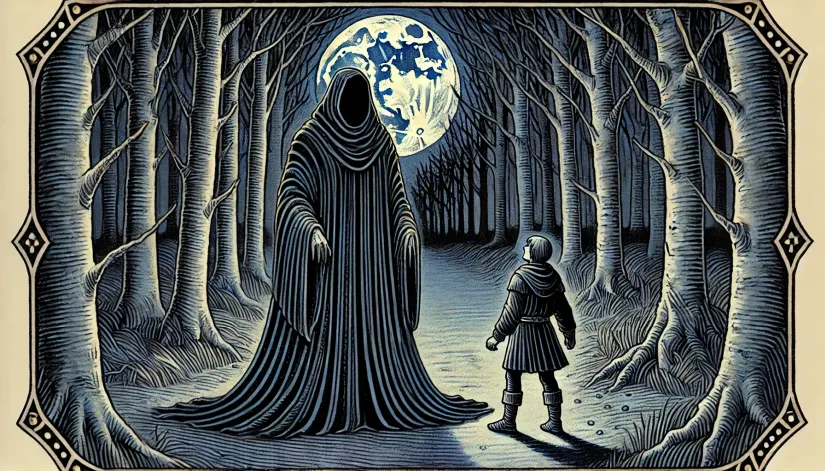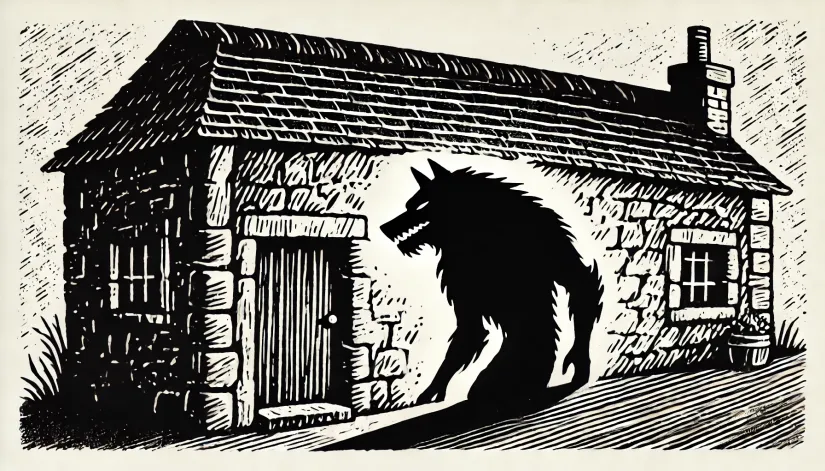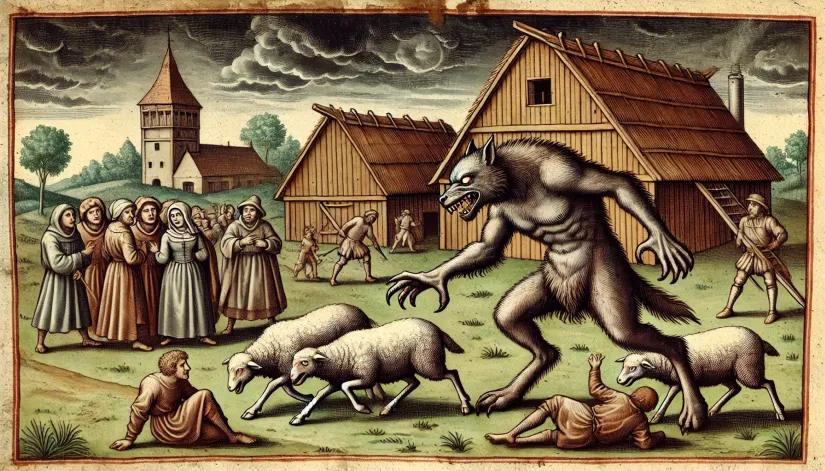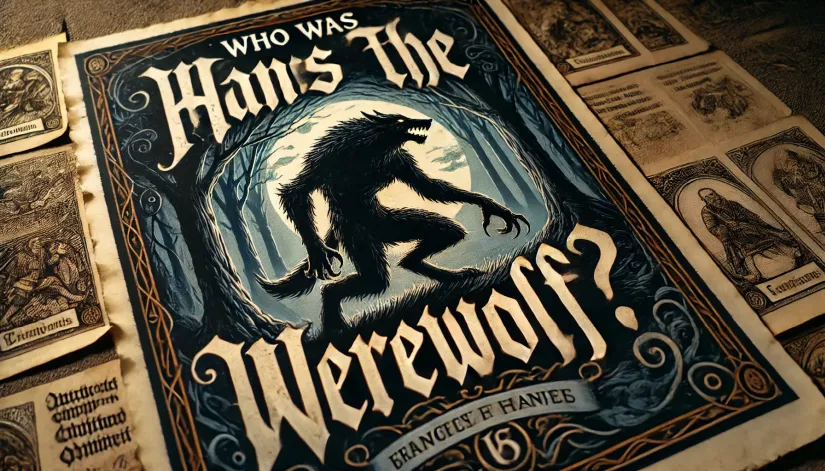When you think of werewolves, you probably picture a full moon, sharp claws, and howling in the night.
But in the 1600s, some folks actually believed people could turn into wolves—and “Hans the Werewolf,” an 18-year-old from Estonia, found himself right in the middle of that terrifying belief.
This isn’t some Hollywood creation, either. It’s history. Real, eerie, and downright chilling.
In this article:
Werewolf Trials in Europe
Before discussing what happened to Hans the Werewolf, let’s kick this off with some context. Context is important here. And it ties Hans’ case with many others from the same period.
Between the 16th and 17th centuries, Europe was in full swing with the so-called werewolf trials. Think of it like the Salem Witch Trials. However, instead of witches, the accused were believed to transform into men-eating monsters.
This madness stretched from Germany to France and even into the Baltic regions like Livonia (modern-day Estonia).
So, what was going on? Well, many (especially in rural areas) lived in fear of wolves… and the unknown. They believed that certain individuals—with the help of dark magic or the Devil himself—could literally turn into wolves and attack livestock. Or, even worse, humans. The panic was real.

Who Was Hans the Werewolf?
That was the historical context. Now, let’s get into the strange story of Hans the Werewolf.
It all went down in 1651. Hans was only 18 when he was accused of being a werewolf in the town of Ida-Viru County, Livonia. The charges? That he had transformed into a beast and terrorized his neighbors. I mean, wild, right?
But it gets crazier. When Hans stood trial, he didn’t deny it. In fact, he admitted he’d been a werewolf for two years. Yeah, you read that right. Two years. He told the court that a mysterious man in black had bitten him when he was 16. And that’s how the whole transformation started.
In Hans’ case (like many others), the idea of being bitten by a man in black was interpreted as evidence of a pact with Satan. So, the authorities wanted to closely associate werewolf accusations with witchcraft. They wanted to push the narrative that those transforming into wolves were in league with dark forces.
The court pressed him with some strange questions: Did his body really transform? Or perhaps it was just his spirit taking on the form of a wolf?
Hans claimed he physically became a wolf. As “proof,” he showed a dog bite on his leg from an attack during one of his alleged transformations. He claims the bite mark remained when he returned to human form.
But let’s be honest—there’s a good chance this so-called “man in black” was just an ordinary person.
The 17th-century Livonia was filled with struggling folks, hermits, and people living on the fringes of society. It’s entirely possible that young Hans crossed paths with a deranged or desperate man—maybe even a hermit—who attacked him.
With the superstitions of the time and the fear surrounding anything out of the ordinary, it’s no wonder Hans convinced himself he was cursed. That encounter likely fueled his belief that he could transform into a beast, which made his confession all the more convincing to the court.

Why People Believed Hans’ Story?
It all ties to the werewolf trials that happened back then. As mentioned above, the belief in werewolves was tied to local folklore... and superstition. So much so that in Estonia and Livonia, people were big on the idea of shape-shifters.
Many thought there were individuals among them who had signed a pact with the Devil (or other dark forces) for incredible powers. And these demons had only one purpose: to wreak havoc.
Hans the Werewolf case wasn’t singular. Across Europe, plenty of similar cases were reported, with people confessing to werewolf-like behavior under intense questioning—and sometimes torture. But more on that later.
Since pretty much any accusation (or even the slightest rumor) could get someone convinced of witchcraft or lycanthropy, Hans’ confession pretty much sealed the deal in the court’s eyes. Sounds like a Satanic pact, doesn’t it? The court wasn’t taking any chances.
What Happened to Hans the Werewolf?
Here’s an interesting twist. Unlike some of the brutal punishments we’ve seen in other werewolf trials (spoiler alert: it usually ends in execution), Hans wasn’t put to death. At least according to some accounts. Instead, it seems the court thought he was suffering from a superstitious delusion.
So, rather than facing the flames, he might have been flogged or locked away.
However, other historical accounts indicate that Hans may have been sentenced to death following his confession. This inconsistency in the records could be due to variations in local accounts or gaps in historical documentation.
To stay as accurate as possible, we should say that Hans’ fate is unknown. We can’t be sure of anything else beyond that.

Similar Werewolf Cases in Europe
Hans the Werewolf wasn’t the only one to face a werewolf trial. Across Europe, there were multiple reports of people confessing to lycanthropy (the fancy term for werewolfism).
Take Gilles Garnier, for instance, a French hermit who confessed to killing and eating children while in wolf form. Garnier was burned at the stake in 1573.
Then there’s Jacques Roulet, another Frenchman who, after being found half-naked and covered in blood, admitted to using a salve to turn into a wolf. He was initially sentenced to death, but later declared mentally ill and confined to an asylum.
Peter Stubbe, the so-called “Werewolf of Bedburg,” is another example. He claimed to have worn a magical belt given to him by the Devil, allowing him to transform into a wolf.
Stubbe’s confession—likely coerced—led to one of the most horrifying executions of the time: he was lashed to a wheel, his body torn with red-hot pincers, and eventually beheaded before being burned at the stake.
Each of these cases followed a similar pattern: an accusation, a confession (sometimes coerced), and a brutal punishment.







